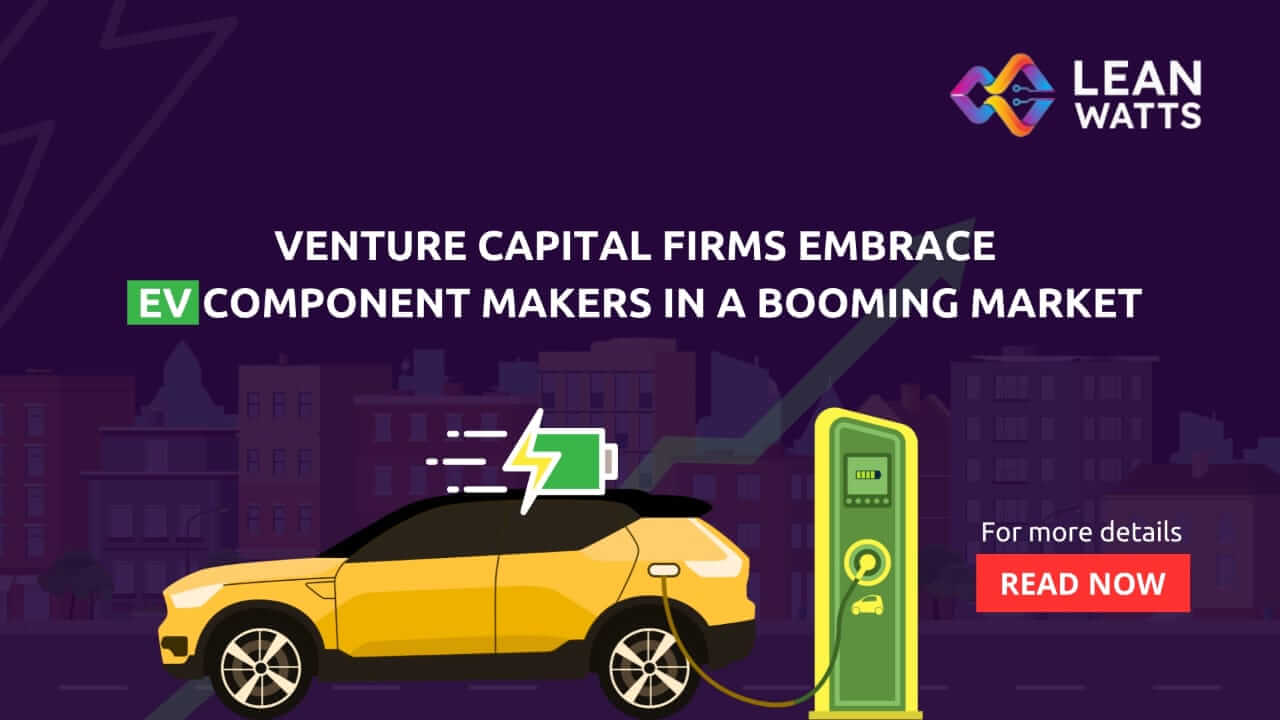
The electric vehicle (EV) industry is experiencing a significant surge in interest and investment, not just from traditional automakers but also from venture capital (VC) firms. This trend is particularly evident in the case of smaller EV component manufacturers, which have begun to attract substantial VC funding. These companies often originated in different sectors but have pivoted to meet the growing demand for EV parts, providing vital services to original equipment manufacturers (OEMs).
The Evolution of Small EV Component Makers
Companies like Indigrid and Matel exemplify this shift. Gurgaon-based Indigrid, which initially manufactured TV set-top boxes, has transitioned to producing essential EV components such as motor control units (MCUs) and instrument clusters over the past six to seven years. Matel, originally a solar water pump manufacturer since 2016, ventured into EV part production in fiscal year 2021. Both companies secured their first institutional funding only recently, in May- June 2024.
These firms have leveraged VC funding to scale their operations, capitalizing on the increasing local demand for EV components such as EV charger. This space has traditionally been dominated by large manufacturers like Sona Comstar and Sterling Gtake. However, the agility and innovation of these smaller firms have allowed them to carve out a niche by offering comprehensive, design-to-manufacturing services.
Full-Stack Solutions and Rapid Iteration
Indigrid, for instance, provides a range of components including MCUs, vehicle control units (VCUs), battery management systems (BMS), and DC-DC converters. This ability to offer full-stack solutions is a significant advantage. According to Matel co-founder Netaji C Patro, many large players are highly specialised, focusing on specific components such as motors, while smaller firms can cover a broader spectrum of parts, making them more adaptable and responsive to market needs.
Rishab Puri, co-founder of Indigrid, highlights the increased need for electronic components in EVs compared to internal combustion engine (ICE) vehicles. This demand creates opportunities for smaller firms to innovate and supply critical parts that larger companies may overlook or find too costly to produce efficiently.
The Growing Role of OEMs and Supply Chain Dynamics
Well-capitalised OEMs like Ather and Ola typically design most of their equipment in-house. However, as their sales grow, so does their reliance on supply chain partners, even for design iterations. Traditional firms like Bajaj and Mahindra, which are expanding their EV offerings, prefer to collaborate more with supply chain partners due to the various benefits, including cost and time efficiencies. This trend has been noted by Amit Sharma, general partner at venture fund Cactus Partners, which has invested in Indigrid.
Smaller firms like Indigrid and Matel can leverage their compact team sizes to offer multiple product iterations with quicker turnaround times. This agility is a significant competitive edge, as highlighted by Mohammed Shoeb Ali, co-founder and managing partner at Transition VC, which has invested in Matel.
Challenges and Opportunities Ahead
Despite their innovative approaches and agility, smaller firms face significant challenges. Traditional players possess deep supply chain relationships and greater production capacities. Additionally, new entrants are still refining their products and scaling up operations. Nevertheless, there is a noticeable shift as established OEMs like Hero MotoCorp and Bajaj, along with newer OEMs like Bounce Electric, Revolt, and Omega Seiki Mobility, begin collaborating with these emerging companies.
Historically, venture interest in these smaller firms has been muted due to concerns over their technical and commercial viability. The sector is heavily reliant on research and development (R&D), requiring substantial time and financial investment before products can become commercially viable. Rishab Puri from Indigrid notes that their products required three to four years of development before reaching the market.
This long development cycle results in a scarcity of startups and investors in the sector. High standards for hardware validation, manufacturing capabilities, and supply chain relations set a challenging benchmark. Shoeb from Transition VC mentions that larger VCs often expect monthly revenues of INR 4-5 crore as a prerequisite for Series A funding, a steep requirement compared to software firms.
Future Prospects and Market Dynamics
With EV sales on the rise, these firms aim to leverage their early investments and innovative capabilities to establish a strong market presence. The overall sales of electric passenger vehicles in FY24 increased by 91% year-on-year to 90,996 units, while electric commercial vehicle sales tripled, according to the Federation of Automobile Dealers Associations (FADA).
Amit Sharma of Cactus Partners encapsulates the sentiment by stating that this market won’t be a winner-takes-all scenario. These emerging firms are positioning themselves as essential suppliers, akin to shovel makers during a gold rush, ready to cater to the growing needs of the EV industry.
In conclusion, the VC interest in EV component makers signals a promising future for these agile and innovative firms. Their ability to adapt, innovate, and meet the demands of a rapidly evolving market positions them as key players in the ongoing electric vehicle revolution.
